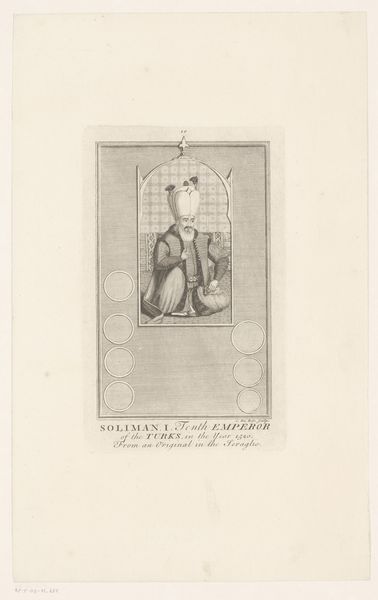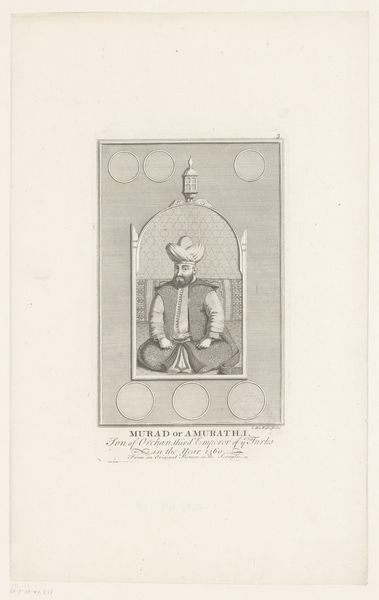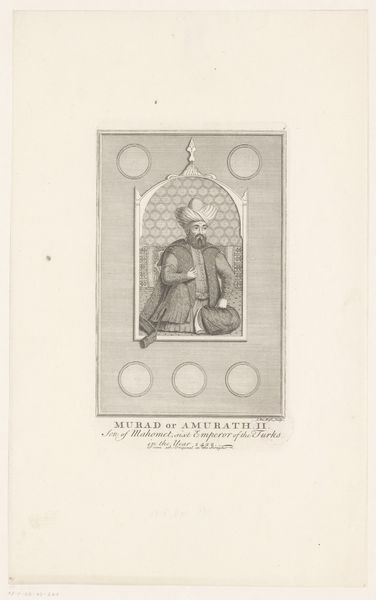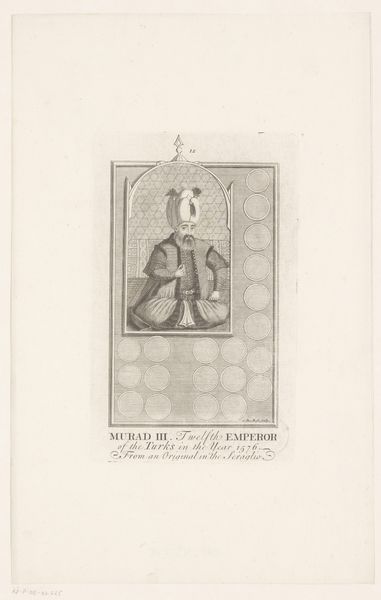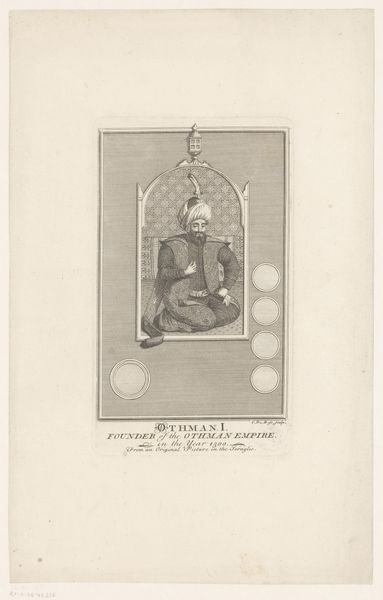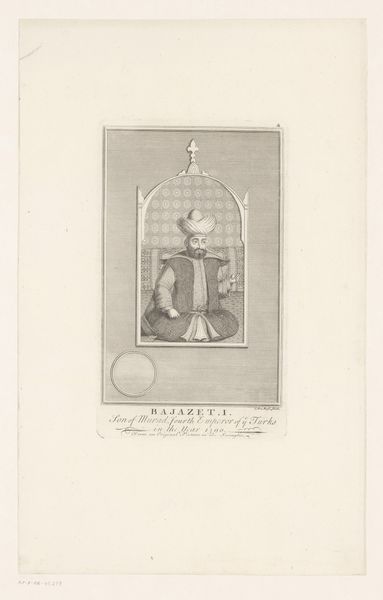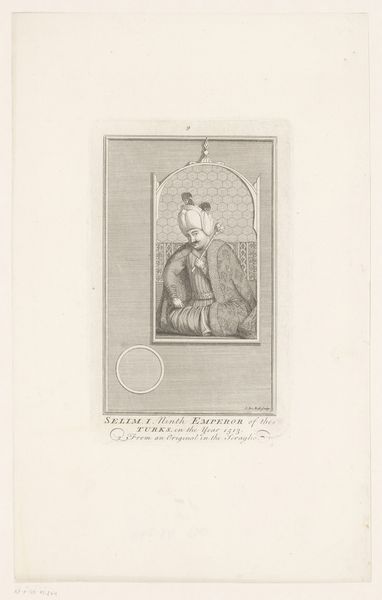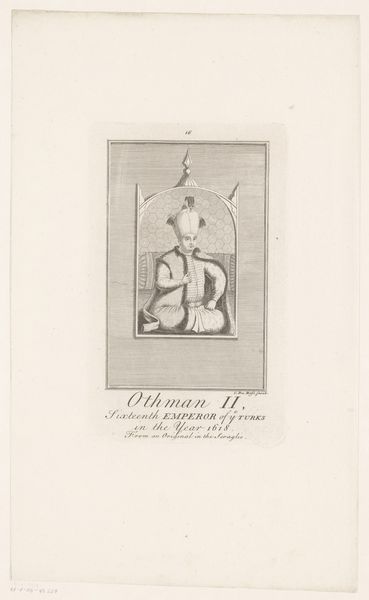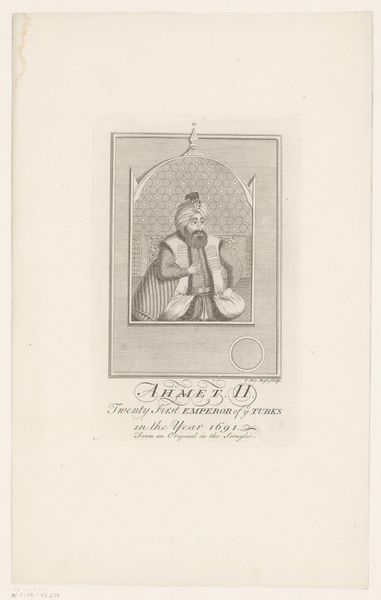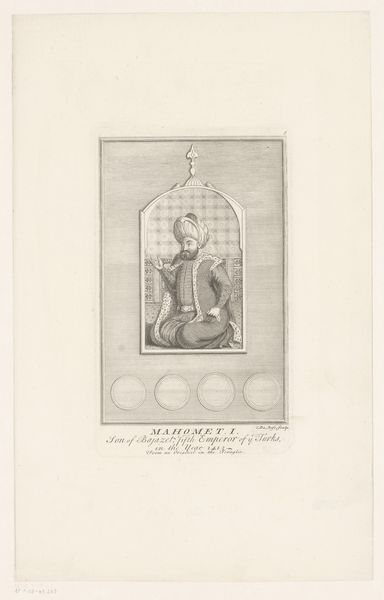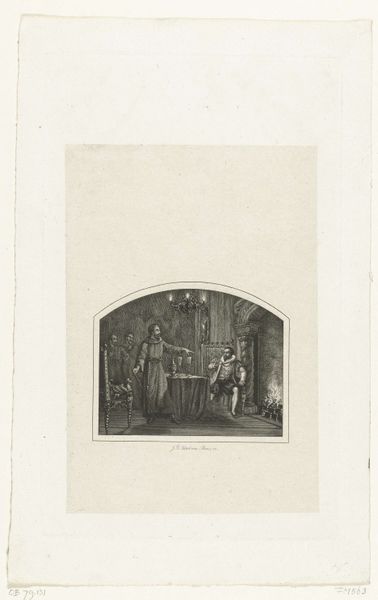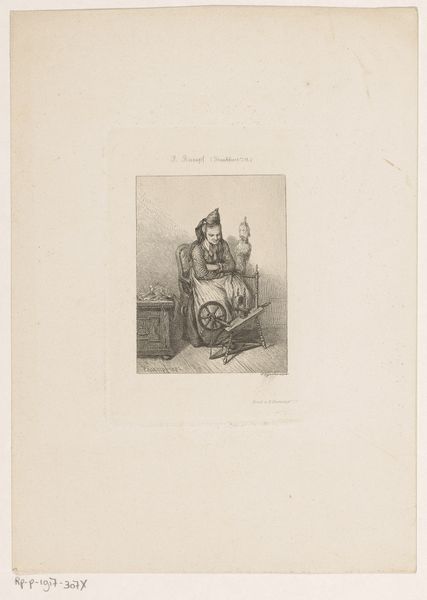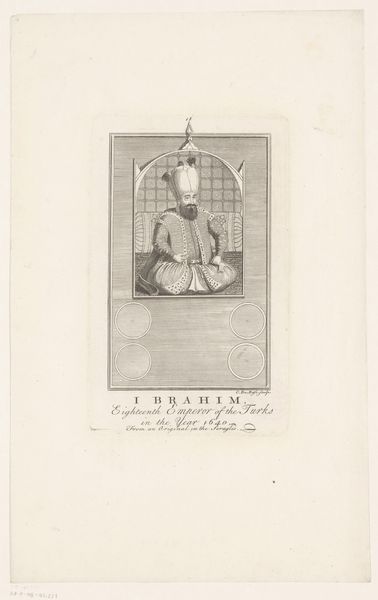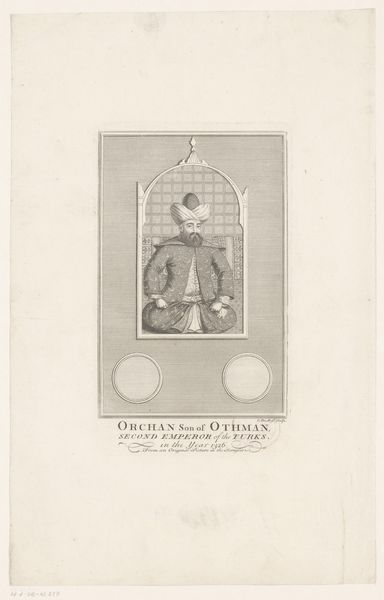
print, engraving
#
portrait
#
baroque
# print
#
figuration
#
form
#
line
#
islamic-art
#
history-painting
#
engraving
#
realism
Dimensions: height 197 mm, width 123 mm
Copyright: Rijks Museum: Open Domain
Editor: This is Claude DuBosc’s "Portret van Bayezid II," an engraving somewhere between 1692 and 1745. The level of detail achieved with simple lines is striking. What symbols or cultural significance might be embedded in this image, particularly in the circles below the portrait? Curator: Ah, an astute observation! These circles might be intended as spaces for coins, implying wealth and imperial authority. Bayezid II is framed within a pointed arch. Do you recognize that shape? It evokes a *mihrab*, or niche, in a mosque. Editor: So, by placing him in that form, the artist connects Bayezid to his role as a religious leader? Curator: Precisely! And the turban is no accident either, a symbol of Ottoman identity. Notice how his garment drapes, and consider how garments serve as a visual indicator of status. Does that inform your perception? Editor: Yes, definitely. The details, like the folds of his robe and the elaborate turban, reinforce his power. It's fascinating how clothing, even in a simple line drawing, speaks volumes. What are your final thoughts on how this image communicates its message? Curator: It demonstrates the endurance of visual symbols across cultures, reminding us that images, whether painted, printed, or sculpted, serve as potent carriers of cultural memory and continuity. They are worth more than a thousand words. Editor: I’ve never thought about prints holding so much history and cultural memory. Thank you, this was insightful!
Comments
No comments
Be the first to comment and join the conversation on the ultimate creative platform.
